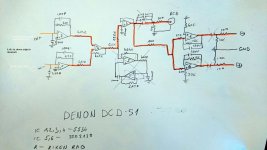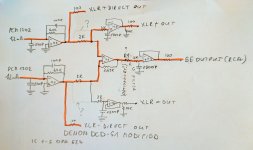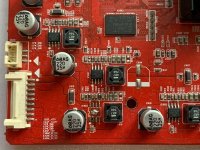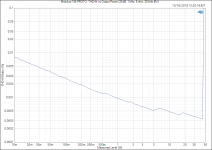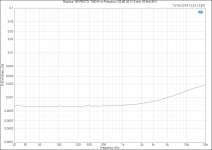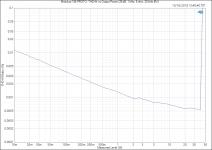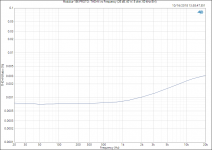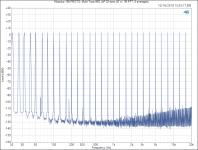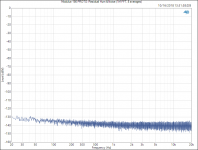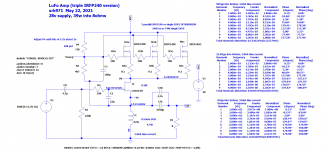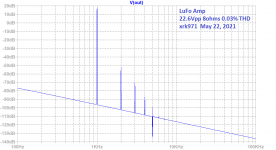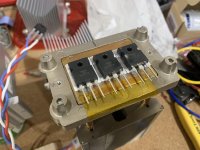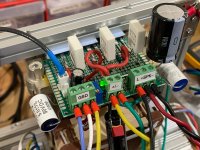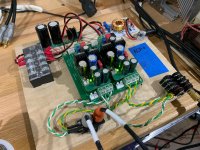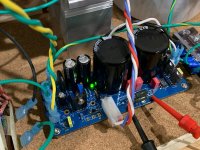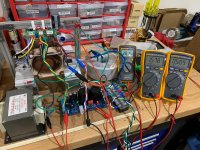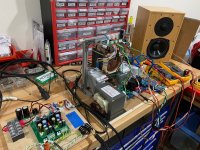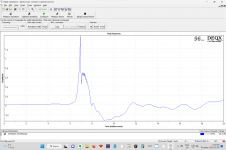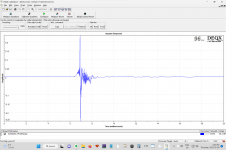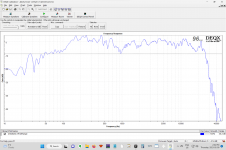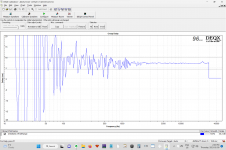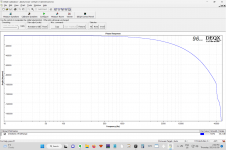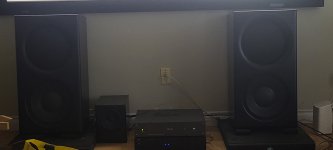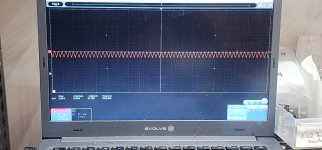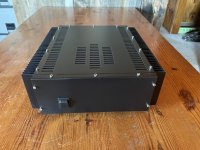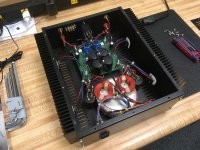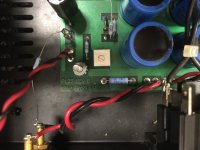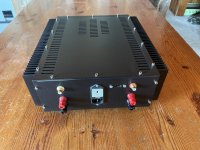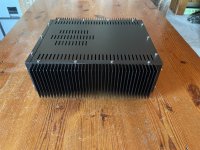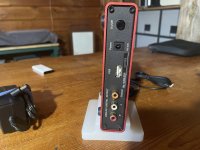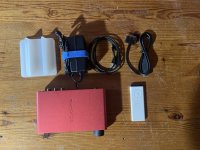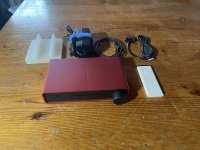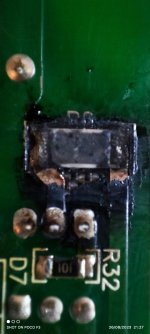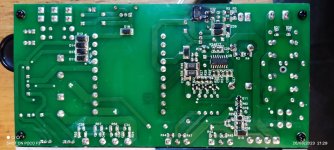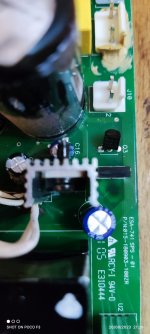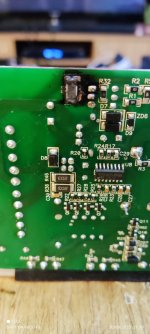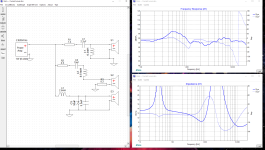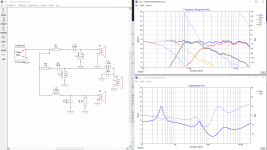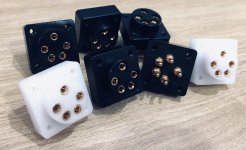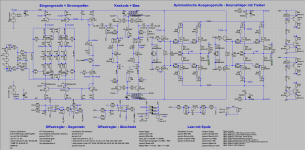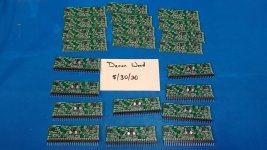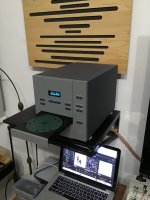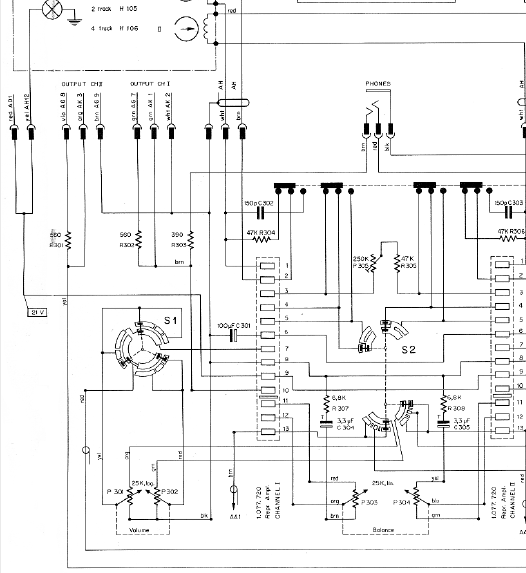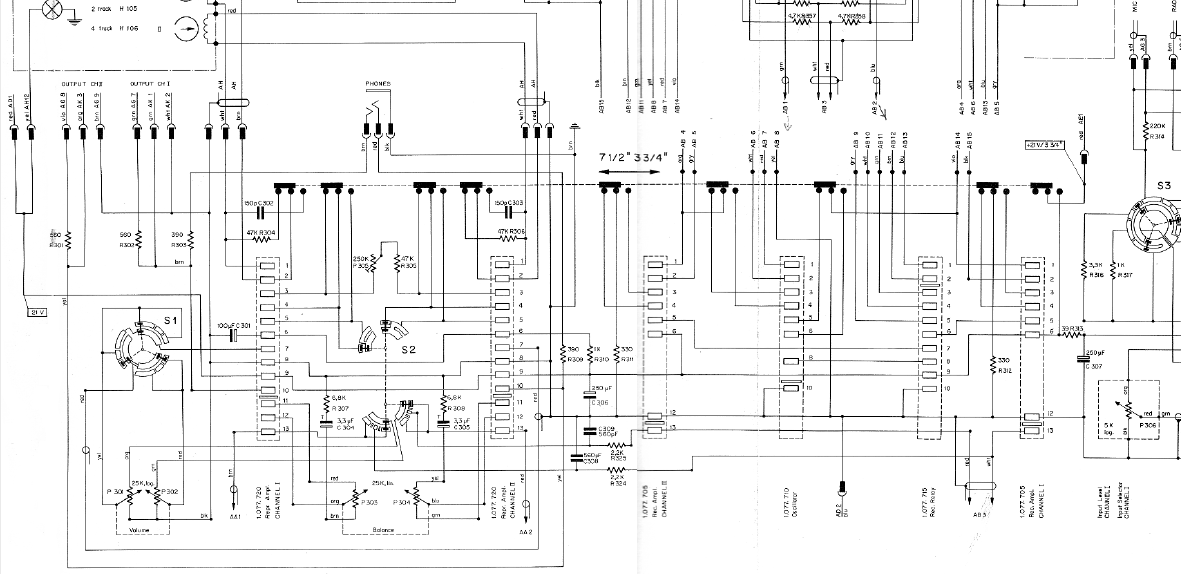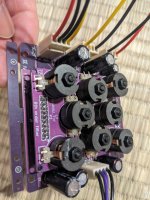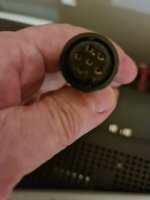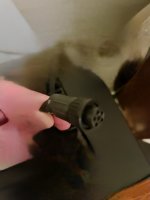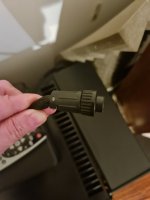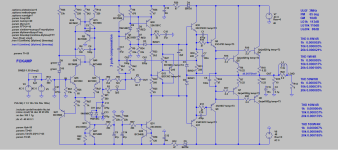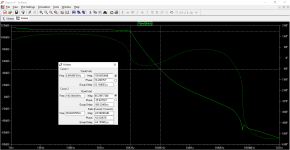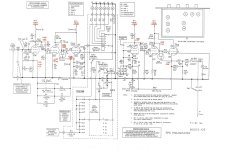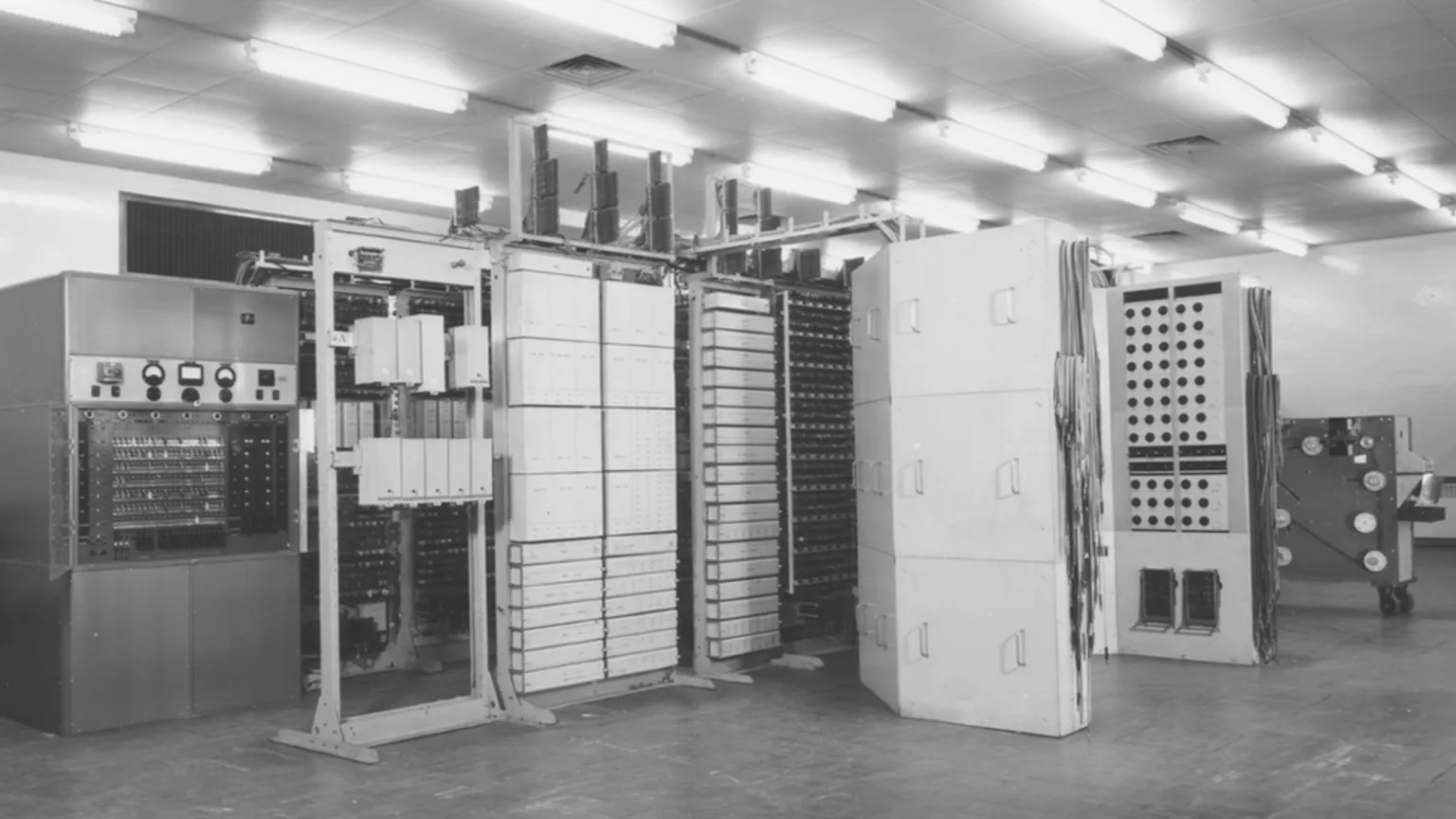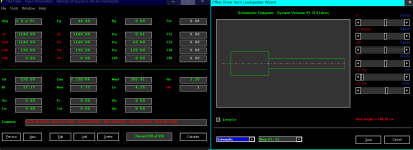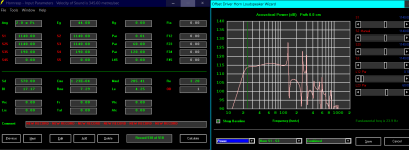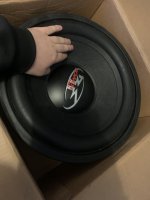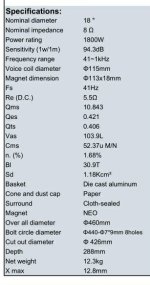Update Nov. 2, 2021 - Final manufacturing files with Vds bias voltage mod for LU1014D as suggested by Mbrennwa.
Files are located here. A huge thank you to JPS64 for making the mods to the layout.
Update Oct 19, 2021 - Final manufacturing files (Gerbers, BOM, schematics)
can be found here. A big thank you to JPS64 for making the beautiful layout.
In the course of testing the new aluminum IMS PCB adapter board for the LU1014D
group buy by member Wg45 (with LU1014D's provided by Mr Pass, and the testing is being performed by Woofertester), I realized that the LU1014D can carry a lot of current and can now be cooled easily and effectively. The ability to mount and cool it easily, combined with the use of a MOSFET cascode stage to increase the rather low 20v limit gave this little transistor new life as an audio output stage. Inspired by Michael Rothacher's (and his alter ego, the “Dude”)excellent
MoFo amp, which I built several years ago when it first came out, I saw that something simple and similar could be done here. I wanted to make something that folks could easily make using scraps from their bench without resorting to a high dissipation MOSFET like an IXYS, or fancy CPU coolers and fans. No, just conventional IRFP240's can be used and at safe levels of dissipation of only 25w each - suitable for mounting on a passive radiatior heatsink like a 4U x 300mm one from Modushop.
Here is the resulting schematic from LTSpice doodling. It has a minimal parts count, yet the performance is quite nice. With a 28v supply and about 3 amps of bias current, the simulations predict that it can get up to 39w into 8ohms before clip sets in. The THD at full power is a little over 0.13% but only 0.01% at 1w into 8ohms and 0.03% at 8w into 8ohms. Of course, all this is with a nice SE Class A harmonic profile that is dominant second order and monotonically descending higher orders.
Here is the schematic:
Here is the predicted FFT for 1w into 8ohms (8vpp) - it gets 0.01%THD and a beautiful harmonic profile:
At an average and rather loud level of 8w into 8ohms - it gets about 0.03% THD and still maintains a nice harmonic profile:
For the purposes of a proof of concept build, I am using CPU coolers and a Noctua fan since I have a pile of them and only 1 conventional 4U x 300mm chassis from Modushop, currently occupied by an Alpha Nirvana (which, btw, has the same output power and dual rails). But the PCB that JPS64 will be doing the layout for me will be a large conventional design with widely spaced MOSFETs (probably UMS compatible). Here is how I am stacking the three MOSFETs (some NOS Phillips PSMN020 150w's that Hugh Dean gave me a while ago) on the Dell CPU cooler, to which I will directly solder a veroboard and build the amp on:
Here is how the LU1014D is mounted onto an IMS PCB adapter that lets it be used like a TO-247:
Here is a closeup of the completed amp - all of it fits on the little veroboard - except the LU1014D and the 67mH (0.5ohm DCR) microwave oven transformer (you can get surplus (MD 803AMR model) ones
similar to this one on eBay), which are attached with 18ga silicone wire flying leads and pin end crimped tips for the screw terminal blocks:
I am using an active bridge (LT4320) rectifier, with a CRC, and a BJT cap multiplier single rail PSU (I measured ripple under 3A load at less than 1mv rms). Although, I think this amp has decent PSRR due to the cascode feedback - so a conventional CRC might just work swell without audible hum:
Here is the first power on test, the amp reached 3A bias current, the voltage at the LU1014D source pin was around 1.5v, and the voltage at the LU1014D drain pin was around 4.2v - pretty much spot on from the simulations. No magic smoke was emitted, and everything was stable. I adjusted the trimpot slightly to achieve about a 3v difference between the drain and source pin of the LU1014D:
I then connected the Pass ACP+ as the preamp - knowing that this will not achieve the full power since it does not have the ability to put out 50Vpp swing - but it will let me test the sound a reasonable volume:
Here it is playing music - it sounds great! I also tried it with a Melbourne preamp that can swing 55Vpp and it does indeed play loud. The bass impact is particularly good for a SE Class A amp. The combination of the low Rdson of the LU1014D and the reactive load of the 67mH microwave oven transformer (MOT) combine to give this amp a predicted damping factor of 157 at 50Hz:
This amp sounds very nice - smooth and similar to the MoFo, but with a different - more muscular feel, perhaps a bit less distortion. It certainly is easy to build and if you already have a MoFo, you are 80% there. It works fine at 20v or 24v too - just lower output power.
It is a simple and easy amp to build - you will need either a Hammond 193V inductor or pull one from an old microwave oven (or buy those on eBay for about $25) and a powerful preamp if you want to reach the full 39w potential.
We now wait for JPS64 to design us one of his masterpiece PCBs - this should be really cool.
Edit May 26, 2021: max power before onset of clipping is 17.77vrms into 8ohms. That’s 39.5w.
Edit May 24, 2021: Measurements for 1kHz 2.83vrms into 10ohms
8Vrms into 10ohms:
Mouser shopping cart here (thanks to Vunce):
LuFo Amp - 39w SE Class A from 28v Rail
Prototype LuFo UMS compatible production board built by Vunce:
June 25, 2021 - Vunce’s verification build in stereo:
June 28, 2021 - Note that use of non-audio specific chokes like MOTs or Hammond power supply filter chokes may not provide optimal performance when playing sustained bass heavy tracks - this will deplete the magnetic energy stored in the choke and may cause intermittent clipping of high crescendos when preceded by deep bass lines. More info here:
LuFo Amp - 39w SE Class A from 28v Rail
Edit July 10, 2021:
LuFo Lite - a 5.6W 12vdc supply LuFo without a cascode:


